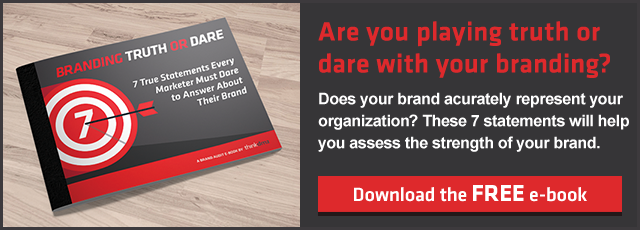
image credit: Rawpixel.com/shutterstock.com
Brand equity is a vital component of what gives your brand meaning and value to its audience. We’ve shared insights into the advantages of brand equity before, but there is more to understand its significance in marketing. Brand equity plays a role in developing your brand identity and value. In this post, we’ll be comparing two unique brand equity models from David Aaker and Kevin Lane Keller.
What does Aaker’s brand equity model look like?
First, let’s discuss how Aaker’s brand equity model is connected with brand identity. This model explains how there are four different ways your company can look at its brand: as a product, person, organization, or symbol. For example, as a “person,” your brand has a unique personality and relationship with your prospects and customers—whereas the “symbol” of your brand is more about its visual style and what it represents on a symbolic level. With this understanding in mind, David Aaker’s model breaks down brand equity into several areas of brand value:
- Brand loyalty: the overall goal is to save your marketing company time and money as a result of consistent returning customers.
- Brand awareness: who knows about your brand, and how did they hear about it? This can be through word-of-mouth, online searches (where SEO comes in handy), or through a referral.
- Perceived quality: making your audience believe in your brand as the top choice among your industry and competitors.
- Brand associations: generally focused on a visual aspect and includes symbolic triggers that remind someone of your brand.
- Proprietary Assets: unlike brand associations, these assets are something your brand truly owns—your trademarked, intellectual property.
What does Keller’s brand equity model look like?
In a previous blog post, we took a look at Kevin Lane Keller’s view of brand equity. Keller’s idea was that there are different levels of brand equity1. This approach can be broken down into the following:
- Level 1: Who is your brand? In other words, think about what pain points your brand solves and who is its target buyer persona.
- Level 2: What is your brand? This level focuses less on the emotional side of your company’s brand and more on a business and psychological level. What makes your brand essential to your customers, and how does it demonstrate value?
- Level 3: How do others respond to your brand based on their personal feelings? Aside from showing value to your audience, your company must also have its own values displayed through your branding. Likewise, your brand’s tone, visual style, and overall consistency can leave an impact on your current audience and potential new leads as well.
- Level 4: How does your brand resonate emotionally with your audience? Yes, emotion is a critical component in branding—especially for those in marketing! As an example, this can be how your company responds to customer pain points and provides helpful solutions in a compassionate manner.
Overall, both Aaker and Keller have a similar approach to brand equity, with perhaps a few areas receiving more focus than others. Both brand equity models can provide your company with a branding approach that’s helpful, holistic, and valuable to your audience and current customers. For more branding strategies, please feel free to view more of thinkdm2’s blog work. Thinkdm2 is a New Jersey digital marketing and branding agency that specializes in the professional services and technology industry.
1 Keller, Kevin Lane, et al. Strategic Brand Management a European Perspective. 4th ed., Financial Times/Prentice Hall, 2012. Retrieved April 23, 2020



